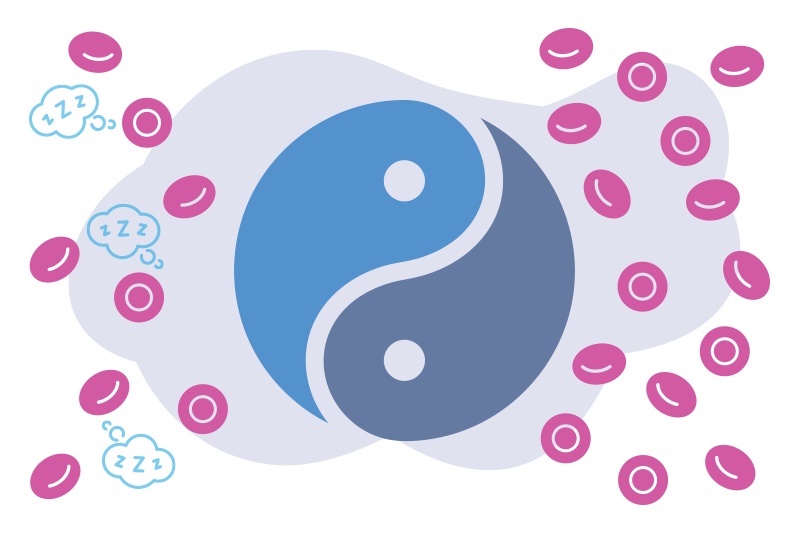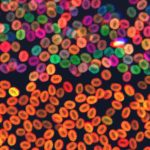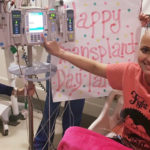Exploiting a vulnerability in an aggressive leukemia

Survival has improved greatly in children with acute lymphocytic leukemia (ALL). But a certain form of ALL that occurs mostly in babies is still very lethal, with a survival rate below 50 percent: B-cell acute lymphoblastic leukemia with rearrangements of the mixed lineage leukemia gene, or MLL B-ALL.
“Something about the biology of this type of leukemia is very peculiar,” says Grant Rowe, MD, PhD, attending physician in the Dana-Farber/Boston Children’s Cancer and Blood Disorders Center. “It can switch its cellular lineage from lymphoid to myeloid and it aggressively infiltrates the nervous system.”
New work by Rowe, together with members of the Stem Cell Program and the Hematopoietic Stem Cell Transplant Program, may open a window to treating this aggressive, chemotherapy-resistant form of B-ALL.
Probing leukemia-initiating cells
Knowing that self-renewing leukemia-initiating cells spark relapse of high-risk B-ALL, Rowe and his colleagues wanted to better understand their properties. They used single-cell RNA sequencing to see what genes these cells were using coupled with transplant experiments to study the cells’ proliferation. This brought several key insights, published recently in Cell Reports.
First, leukemia-initiating cells were more abundant in MLL B-ALL than expected. Second, they could emerge not only from immature, undifferentiated B-ALL cells, but also from more mature cell populations. And third, they were of two types.
“We found an enriched population of apparent leukemia-initiating cells,” says Rowe. “But it turns out that these cells can adjust their metabolic profile to go from a stem-cell state to a non-stem-cell state and vice versa.”
RNA profiling revealed two distinct metabolic states. The first is an active, proliferation and growth state, marked by energy production through oxidative phosphorylation. The second, a quieter stem-cell state, is marked by low-oxygen conditions and energy production through glycolysis; this likely reflects an ability to remain latent, similar to normal blood stem cells.
The cells’ ability to morph between these two states could explain why they are so hard to target, and why MLL-rearranged B-ALL is so dangerous, Rowe says.
Taming MLL B-ALL aggression
Paradoxically, when the researchers tried inhibiting leukemia cells in the active proliferation state, more of these cells emerged, contrary to results in other forms of leukemia.
“Many therapies in adult leukemia try to target the active, oxidative phosphorylation state to curb growth,” says Rowe. “In this infant leukemia, we were surprised that the intervention had the opposite effect. It slowed overall proliferation, but by forcing the leukemia cells to assume a more resting state, more stem-like cells emerged, making the leukemia more aggressive.”
Conversely, targeting leukemia-initiating cells in their quiet state, by inhibiting glycolysis and hypoxic signaling, curbed the leukemia. It forced the cells back to the oxidative phosphorylation state, but they lost their leukemia-initiating properties in the process.
“They don’t seem to act like stem cells any more, and don’t have the properties that seem to be related to relapse,” says Rowe. “We need to go after stem cells in this infant leukemia differently than we do in adults.”
An agenda for the future
Eventually, these insights could lead to a new approach to taking down this tough cancer. The hypoxic, glycolytic state is a way for the cancer to lie low, but it’s also a vulnerability that presents an opportunity.
A chemotherapy drug previously used for solid tumors, echinomycin, inhibits hypoxic signaling. When Rowe and colleagues tried it in mice transplanted with human MLL-rearranged B-ALL, it slowed the growth of leukemia and depleted leukemia-initiating cells.
“We know how to dose this drug in children and its safety profiles,” says Rowe. “But our next step is to try to better understand the properties of leukemia-initiating cells in this and other aggressive leukemias and how to target them.”
“Studies like these provide deep insight into the biology of this aggressive childhood leukemia and may help us develop desperately needed novel therapeutic approaches,” says Scott Armstrong, MD, PhD, associate chief of hematology/oncology at Boston Children’s and president of Dana-Farber/Boston Children’s.
Rowe also hopes to do similar profiling to identify new vulnerabilities in other forms of ALL across the age spectrum.
Vivian Morris of Boston Children’s Stem Cell Research program and Dahai Wang of the Stem Cell Transplantation Program were co-first authors on the study.
Explore clinical trials and research at Dana-Farber/Boston Children’s Cancer and Blood Disorders Center and visit the Rowe Lab.
Related Posts :
-

Preventing leukemia by preventing rogue blood cells from taking over
As we age, many of us acquire mutations that cause some of our blood stem cells to multiply faster than ...
-

Finding new targets for acute myeloid leukemia in children
Acute myeloid leukemia (AML) is the second most common leukemia diagnosed in children. It is hard to treat and can ...
-

Surviving stem cell transplant: New hope when the donor isn’t a full match
To see Tara Daniels today, with a corporate job in marketing and about to close on a house, you’d ...
-

CAR T-cell therapy helps young hockey fan ice pediatric leukemia
Due to COVID-19, Ava Girolimetti wasn't sure if she would be starting middle school this year in a classroom, on ...





